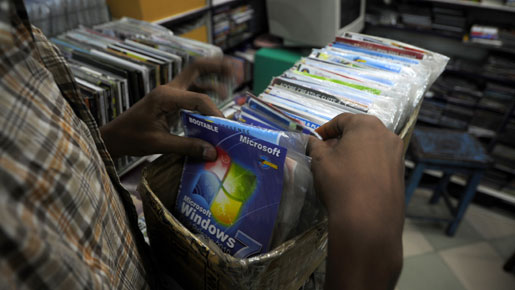
Do you know if the software your company uses is fully licensed? If not, you should make it your business to. Using unlicensed software is illegal, and brings a multitude of business risks, from heavy financial penalties through to disrupted business operations and damages to personal and business reputations.
And yet, despite these potential risks, the use of unlicensed software is rife. In its 2008 Piracy Study, analyst firm IDC calculates that 41 percent of worldwide installed software is illegal. In central/Eastern Europe, two in three pieces of software is illegal; in Western Europe, the figure is one in three. These figures indicate that a large number of organisations are guilty of mismanaging their software, including those that pride themselves on their professionalism.
With so much at stake, why is unlicensed software use so prevalent? A key reason is that software licensing is still regarded as an IT, rather than a business, issue.
Understand the risk to your business…
Many business leaders either turn a blind eye to illegal software use, or assume that their IT director is shouldering the responsibility, without realising that they will ultimately pay the price if their business is found out. While senior managers can be distracted by a busy workload, if they do not take time to understand their software licensing they are taking a big risk. While many businesses do not purposely infringe copyright law, ignorance is no excuse.
The Business Software Alliance, a global organisation representing the software industry, is committed to the eradication of software piracy, and takes legal action against companies that commit intellectual property (IP) theft.
Companies faced with legal action can find the experience very costly; particularly as the expense is unlikely to be planned. For instance, following a BSA investigation, a media hosting company was recently found with substantial quantities of unlicensed software and ordered to pay over £100,000 in damages, and faced a bill to purchase legal copies of the software in the region of £120,000. The media exposure that often follows these settlements adds the cost of a damaged reputation to the financial outlay. The BSA also encourages employee whistleblowers to confidentially report any known culprits of software piracy. In 2009, around 4,200 leads were received across EMEA. Rewards are offered to incentivise leads – in the case of the media hosting company the informant netted £10,000.
Cutting corners on software licensing can also have serious operational consequences, so there is a compelling business continuity reason to strive for full compliance. Unlicensed software can contain pre-loaded malicious software, trojans and viruses, and is not always eligible for manufacturer patches, leaving computers vulnerable to infection, subsequent data loss and possible system failure. With so much business critical information now residing on company networks, the consequences of this could be disastrous.
Why it pays to be legal
Companies that properly manage their software licences can actually save money and exercise greater control over their IT, making them more efficient and competitive; which is why the extent of unlicensed software use in business is so short sighted.
As with other areas of good corporate governance, achieving effective compliance in software licensing is a matter of having effective policies, processes and controls in place. These measures are a part of a business practice known as Software Asset Management (SAM), a strategic approach to managing and optimising software assets, often with the aim of helping to minimise overall IT expenditure.
Analysts estimate the savings from SAM can be as much as 30 percent in the first year, with ongoing 5–10 percent annual cost savings in subsequent years. A range of tools exist to support SAM, including software inventory programmes that can identify installed software and this information can be compared to the licenses the business holds. Other tools can measure usage of software, which can help businesses to make well-informed decisions as to which staff need what software.
While these technical tools can help in auditing a business’s software estate, robust internal policies play a key role in addressing the human factors. Clear policies that guide employees on software usage, procurement, and that hold staff accountable for what they download, are essential.
Demand full compliance
We all have an economic and legal obligation to reject the culture of unlicensed software use. There is a false belief in some companies that unlicensed software use is acceptable because it does not hurt the IP owners or the economy – but this could not be further from the truth. Software piracy deprives the software industry of much-needed revenue and jobs. To use the UK as an example, IDC’s research indicates that reducing the UK’s software piracy by 10 percentage points over four years could create over 13,600 highly paid jobs. Such a reduction would also have a wider social benefit, generating more than £6bn in economic growth and increase tax revenues by £1.47bn.
This year the BSA will be escalating its crackdown on businesses that use unlicensed software across EMEA. To avoid facing this scrutiny, we urge business leaders to take control of their assets by engaging with their IT department and demonstrating an active interest in the value of their software.
The key is to approach software licensing in a similar vein to the way we now legislate for and perceive health and safety regulations, recognising that compliance protects businesses against unnecessary risks and accusations of negligence further down the line. Businesses should demand full compliance; anything less could cost their company dearly.

